Cotton Electric History
The 1930s
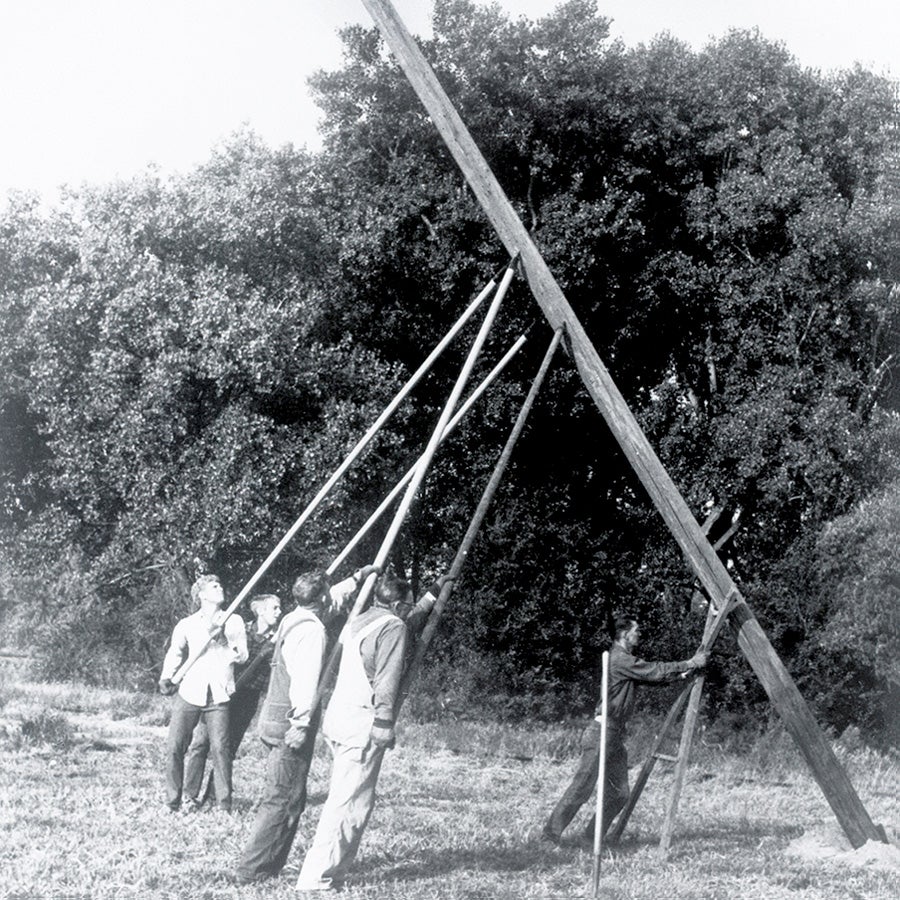
People in Southwest Oklahoma believed that electricity could improve their lifestyle dramatically if only they could afford having it come to their farms and rural homes.
Under the leadership of President Franklin D. Roosevelt, the Rural Electrification Administration had been established in 1935 as part of the New Deal.
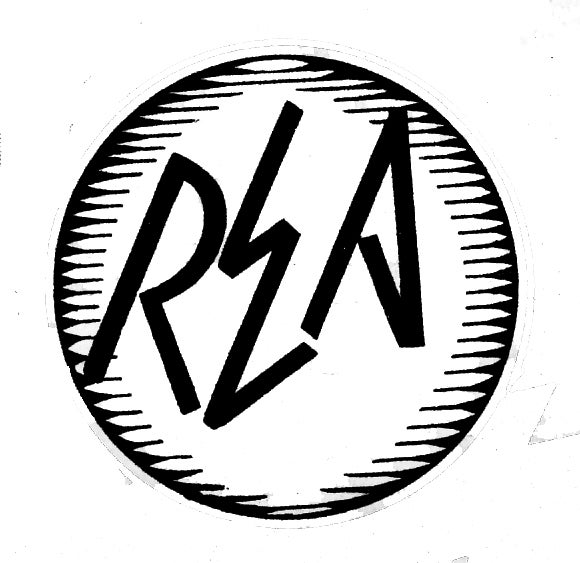
REA would serve as the banking agency, providing loans for building electric lines to areas not receiving central electric service. Because investor-owned utilities were not interested in extending service to the “end-of-the-line” farmer, rural electric cooperatives were formed to take on the job. Eight out of 10 farms didn’t even have electric lights unless they had a home-owned “Delco” system.
“If other communities with similar problems could work their way into a land of better living through rural electricity, why not southwest Oklahoma?” said C.W. Cox, a Walters native and radio repairman. Cox saw in the REA program a tremendous opportunity to stimulate business in the area, revitalize farming procedures for added efficiency and productivity, and provide added home comforts in areas not served by electricity.

Cotton Electric made its headquarters in Walters on its original date of incorporation, Sept. 15, 1938. Cox was hired as the first manager.
On Feb. 20, 1939, REA approved a loan of $230,000 to fund 234 miles of line to serve 780 customers in four counties. Power was to be supplied by the City of Walters. Construction was launched on June 1, 1939. Meanwhile, homeowners were required to have their own homes wired and jobs for electricians proved another area benefit.
Only 84 days later, Aug. 26, 1939 was declared “The Day of Light.” The Walters Chamber of Commerce hosted a barbecue and special ceremony. The switch was thrown in an emotional ceremony, lighting up 150 homes along 109 miles of line. Quickly, coal oil lamps were replaced by electric light bulbs. Electric fans, irons, radios, refrigerators and water pumps were welcome additions to these rural homes.
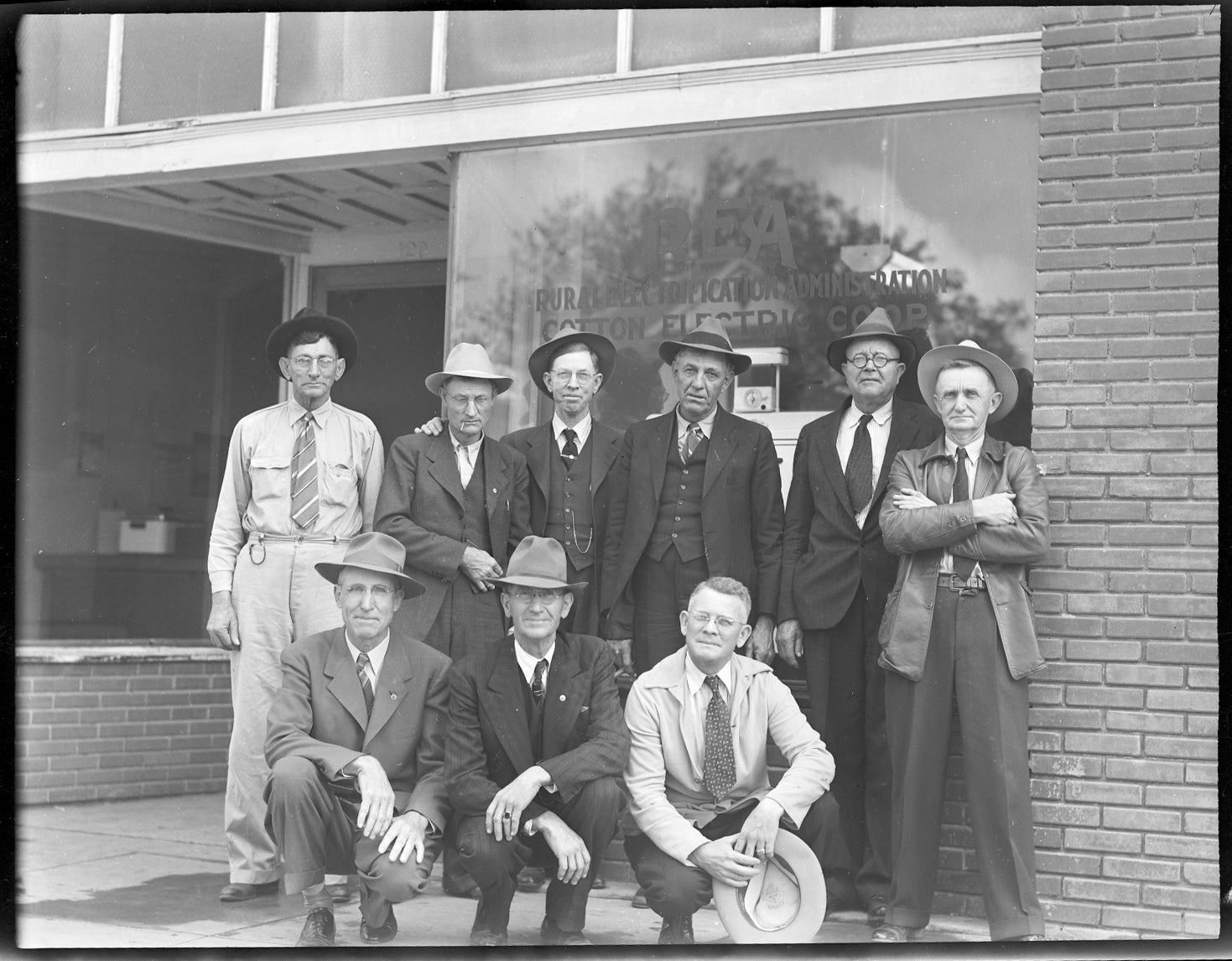
In 1937, Cox enlisted the aid of Walters businessmen, community leaders and progressive farmers to explore the possibilities of establishing a rural electric cooperative at Walters. Groups traveled around the state and to Washington, D.C. to promote the idea. They wrote letters and hired an attorney. The job looked huge in those early days but the group continued its job of selling their pet project to the community into the early months of 1938. The project began to really move in August of that year when the early leaders were joined by farmers and leaders in Stephens and Jefferson counties who wanted to be part of the cooperative. They began the task of signing up members. It wasn’t easy because the $5 membership fee was hard to come by. Some believed the venture was a “pie in the sky adventure.”
Several on the organizing committee held a series of well-attended community meetings. Farm women played an important role in raising the money for memberships. They sold eggs and cream, chickens and turkeys, and did without some necessities to accumulate $5.
The 1940s
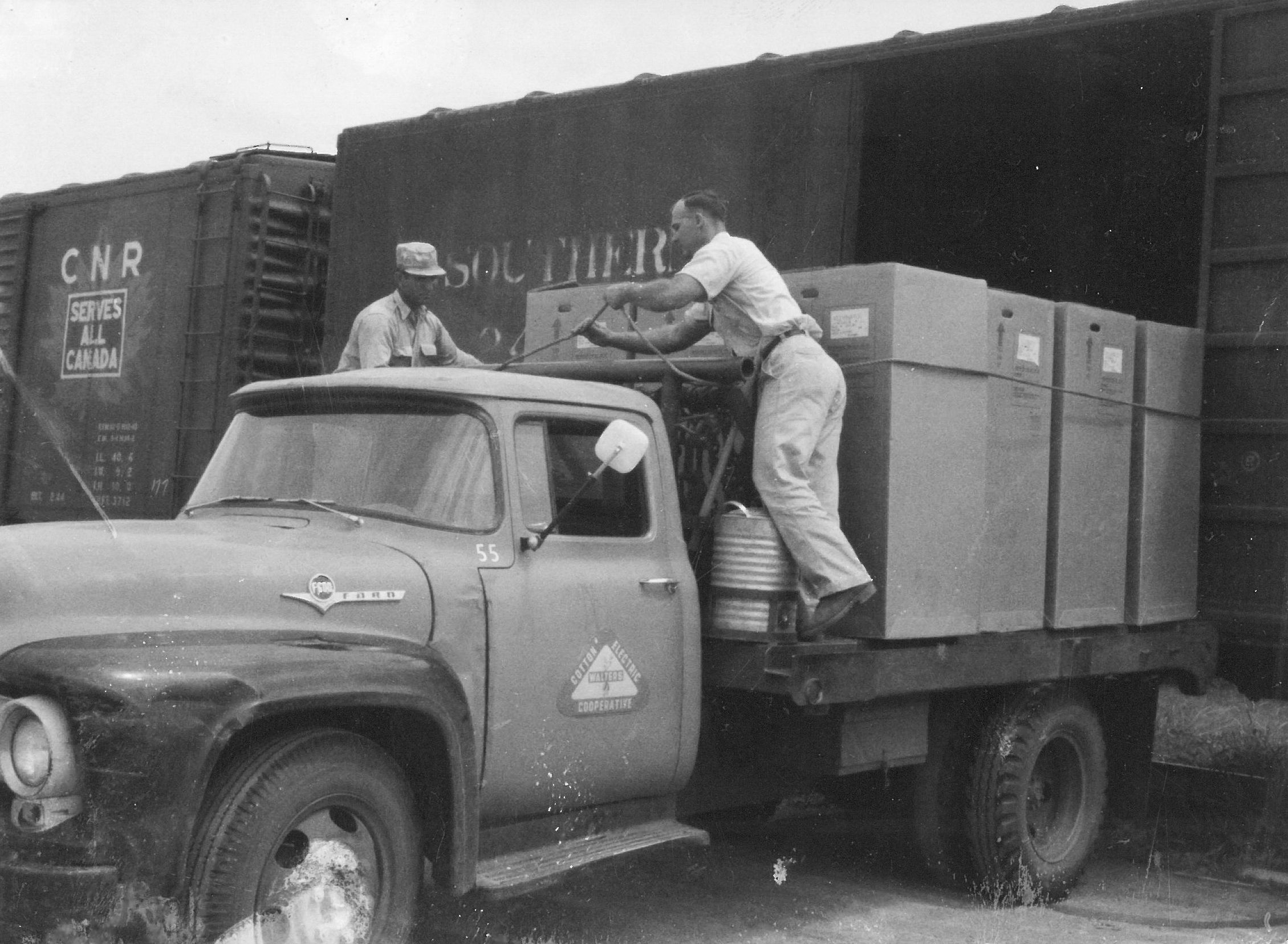
Soon, the co-op was selling itself and people were clamoring to sign up for electric service and become members. With the purchase of the Wolverton Brothers electric system, Cotton added 144 miles of line in Comanche, Tillman and southern Cotton counties. By the close of 1941, membership had reached 1,850.
The war years brought material shortages and saw skilled workmen called into service. Cotton Electric answered a major defense concern by using telephone wire and ingenuity to rig up emergency lines to serve area dairy farms supplying Grade A milk for Fort Sill.
When the war ended, the building of new lines boomed. With a membership of more than 5,500 by 1949, the cooperative was employing a “home advisor” and a “farm electricity advisor.”
The 1950s
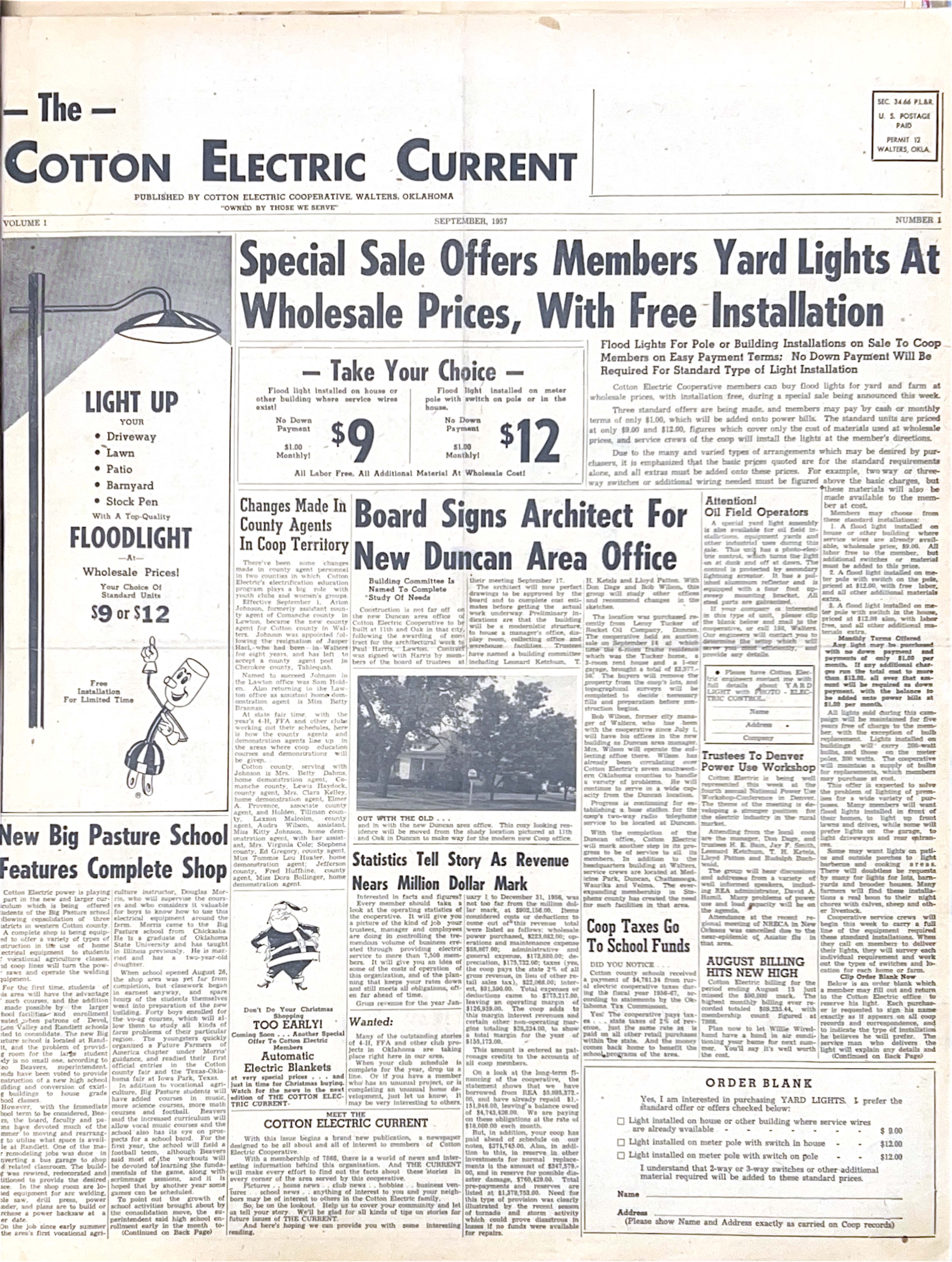
In the 1950s, the first issue of The Cotton Electric Current was published as a four-page broadsheet. Don Dage hired Mrs. Lou Wilson as editor. The Current is the only broadsheet newspaper published in the United States by a rural electric cooperative. It has grown into a 20- to 24-page publication and is mailed to more than 15,000 homes.
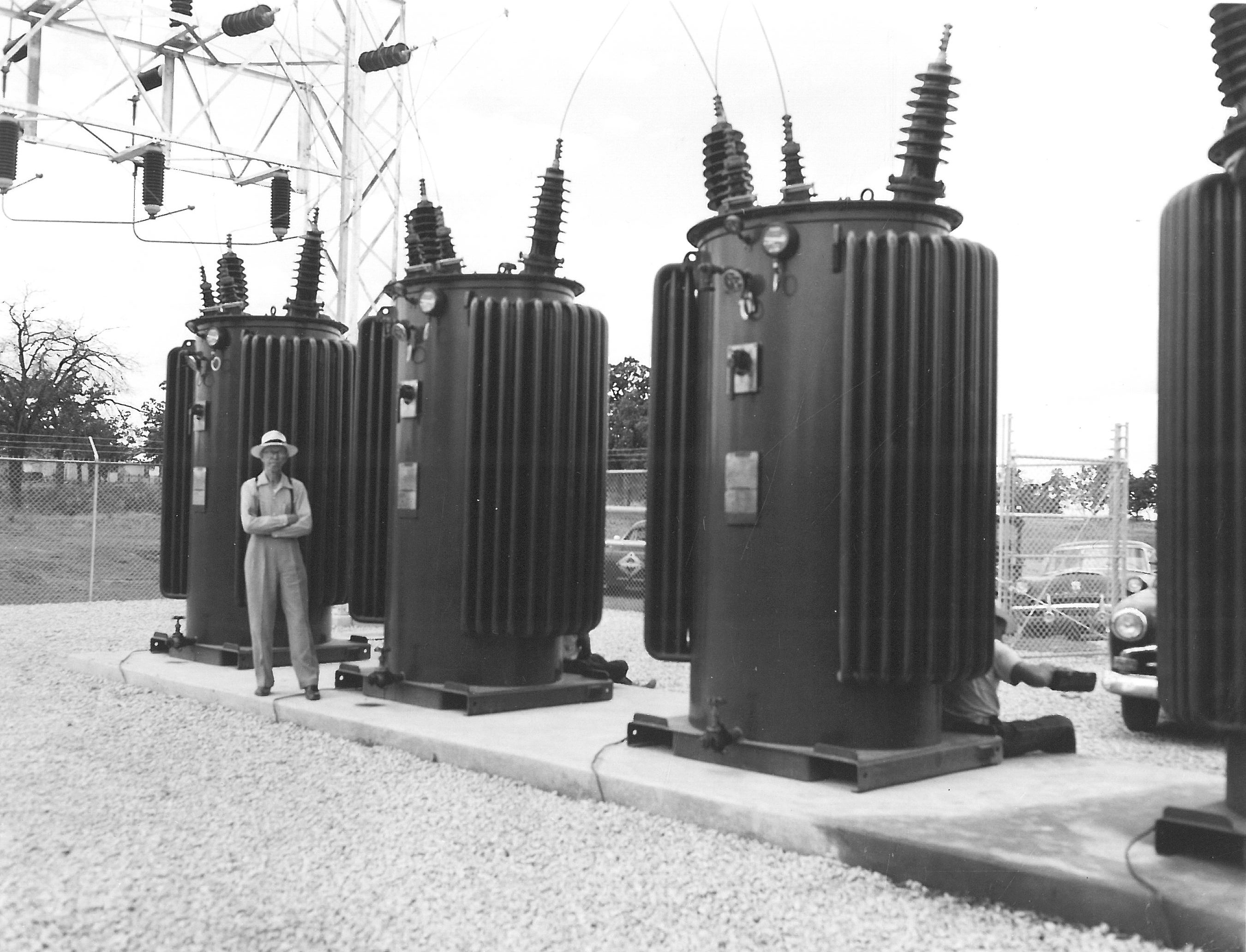
The Duncan area office was opened in 1958 to serve the many members in the Stephens County area. District warehouses are located at Chattanooga, Medicine Park, Velma, Duncan and Waurika.
Heavy oilfield demand in the Velma area called for a new substation. And in 1954, a maintenance facility was established in Velma, with a warehouse, radio relay system, and collection office. Conferences with major oil companies such as Magnolia, Stanolind and Texaco indicated that drilling and refining operations were about to boom. Waterflood recovery operations later would increase production and economic impact of oil on this area even more. To keep pace, Cotton Electric chose to heavy up crews, increase engineering and other assistance and added substations at strategic locations to bolster the power supply and assure quality service.
The 1960s
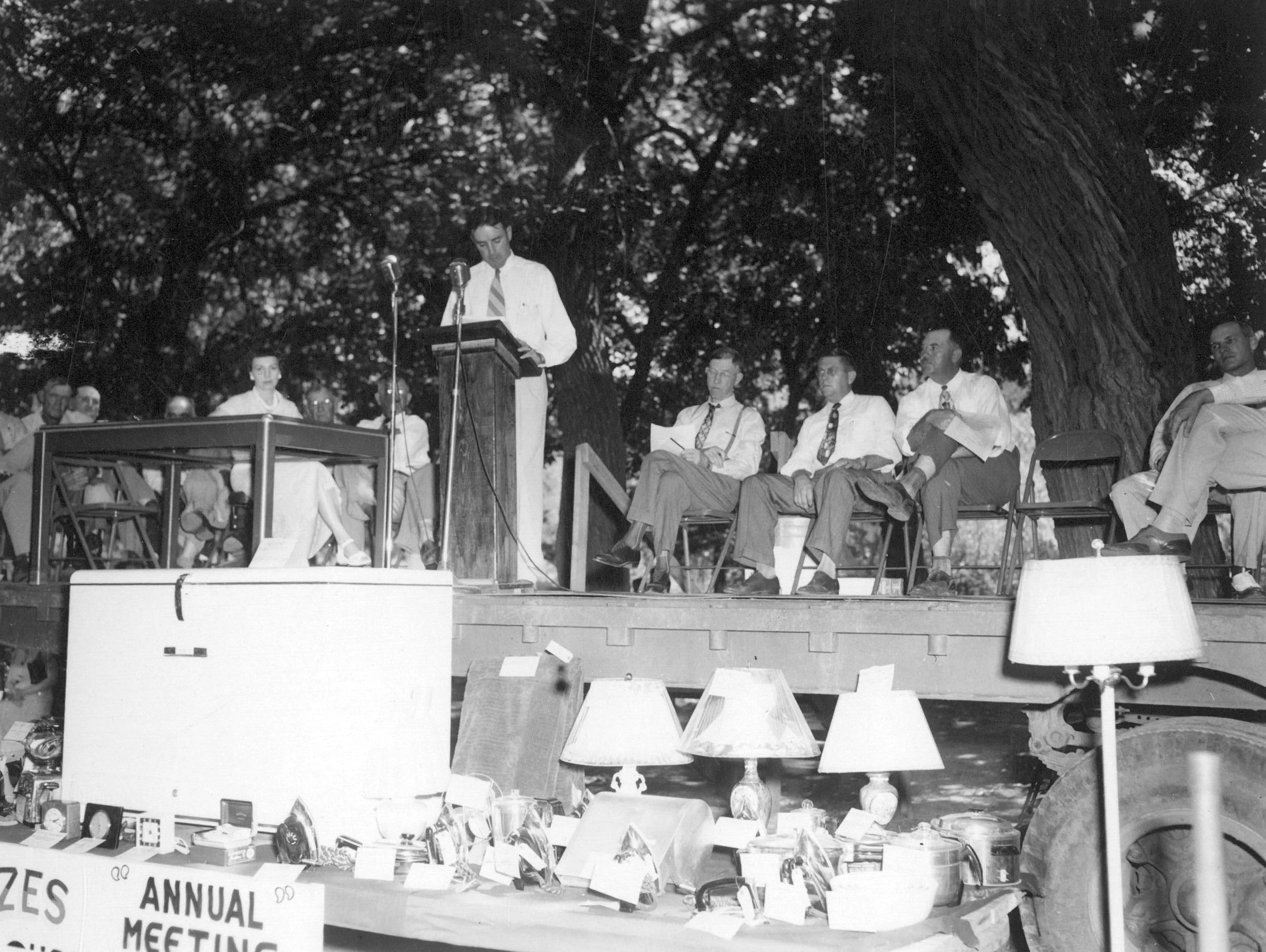
In 1960, Cotton Electric issued the first patronage refund checks. Since then, a total of more than $12 million has been returned to members as their share in margins over and above the cost of operations of Cotton Electric and its power provider, Western Farmers Electric Cooperative.
The network of electric lines continued to spread to rural homes, subdivisions, stores, lakes and recreational sites, oil fields, schools and churches, rural industries and businesses.
The 1970s
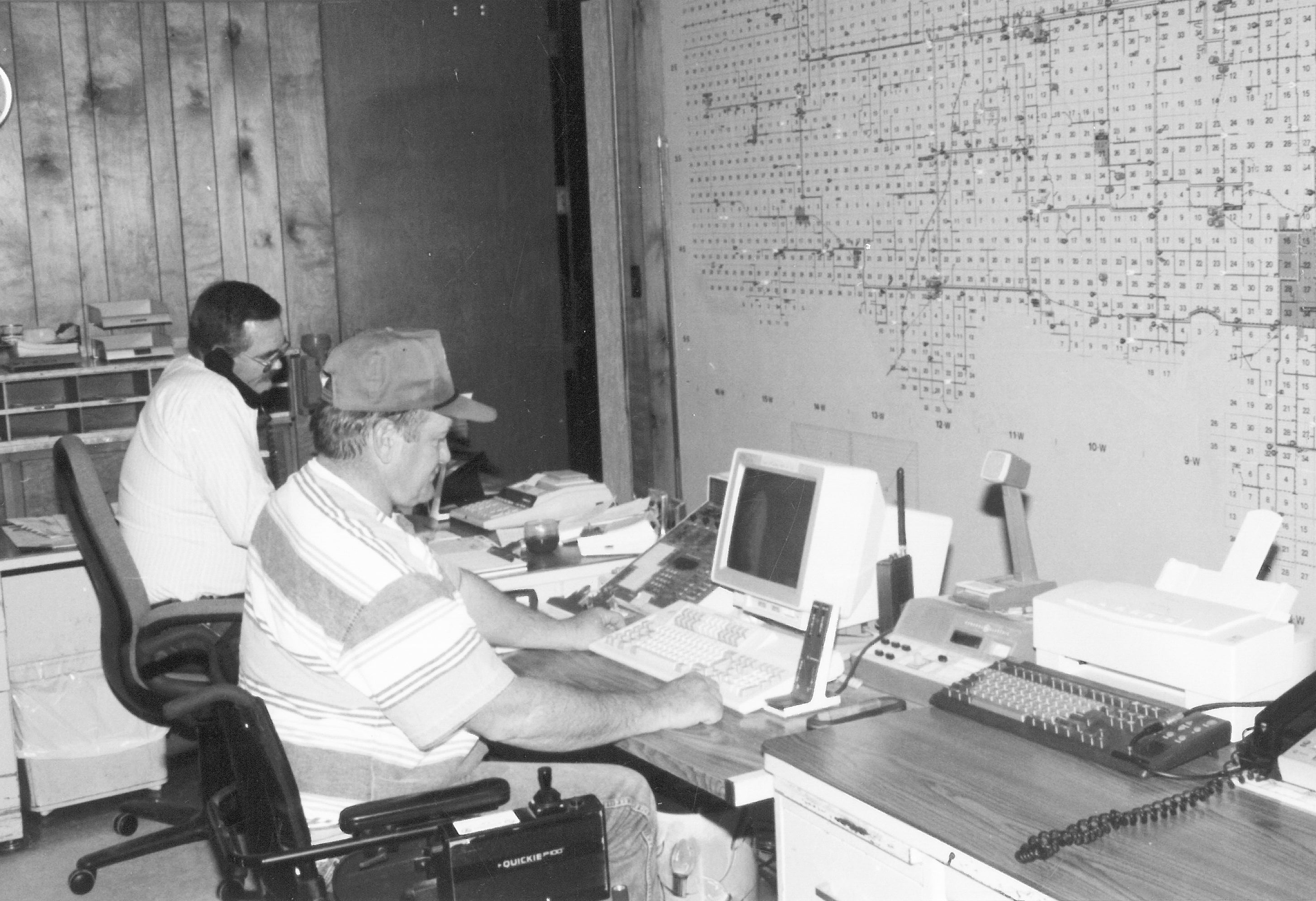
Not until 1974 was any increase in electric rates necessary. An energy crisis along with the cost of natural gas to generate wholesale power and the construction of a coal-fired generating plant signaled an immediate change.
To meet these challenges, Cotton Electric directed educational and informational efforts toward conservation and energy efficiency to help members live with rising utility costs. Popular services such as providing qualified electricians, appliance repairs and home energy audits were expanded to include insulation, weatherization and low interest loans to finance such improvements.
Office operations made the change to in-house data processing. District boundaries were revised in 1976. Round-the-clock dispatching was added to assure prompt response to outages at all hours.
The 1980s
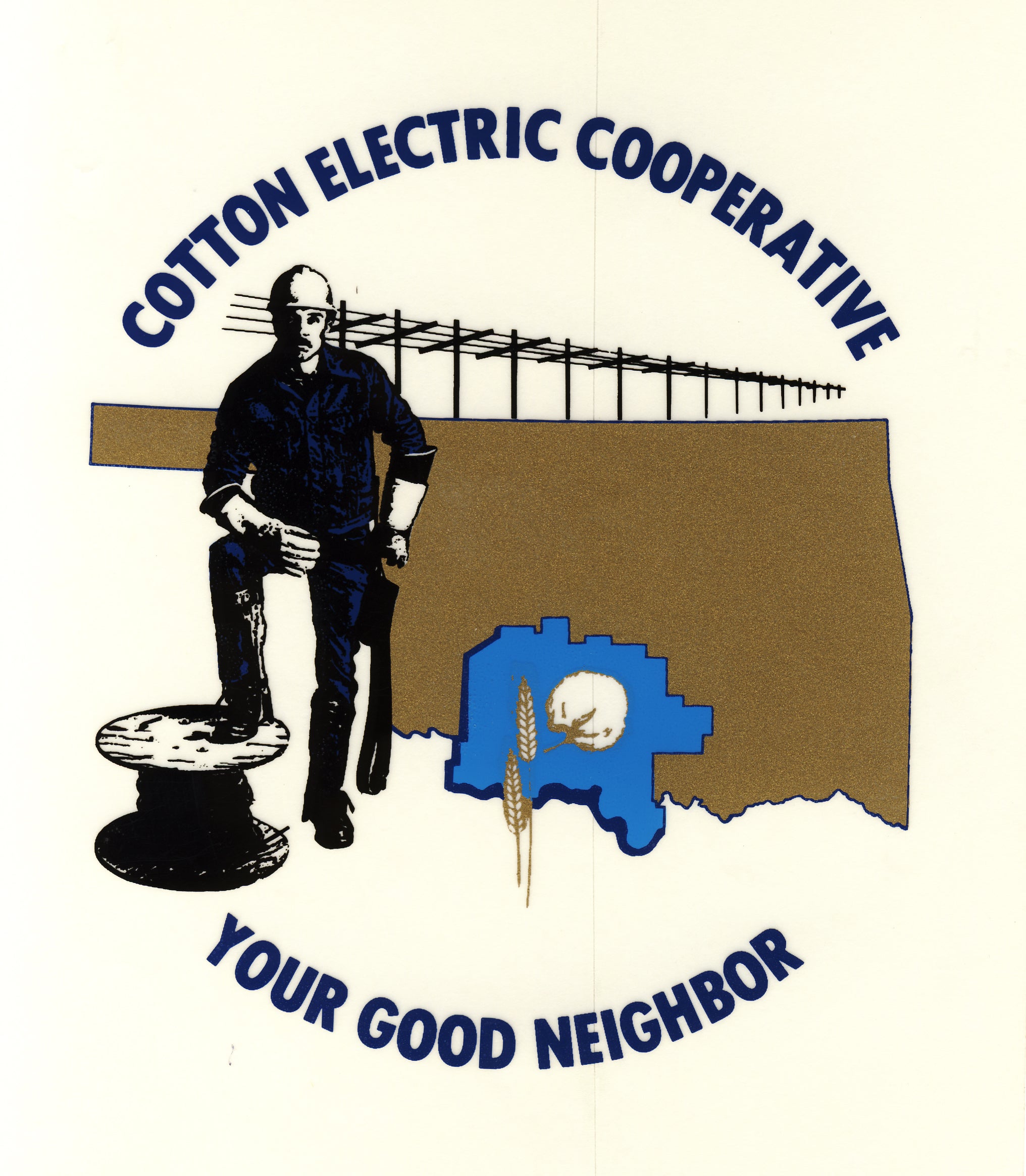
Cotton Electric Cooperative pioneered the “Good Neighbor” concept, adding a “Crime Watch” to prevent vandalism in the rural areas, offering health fairs, community and youth programs and other programs for members of the co-op.
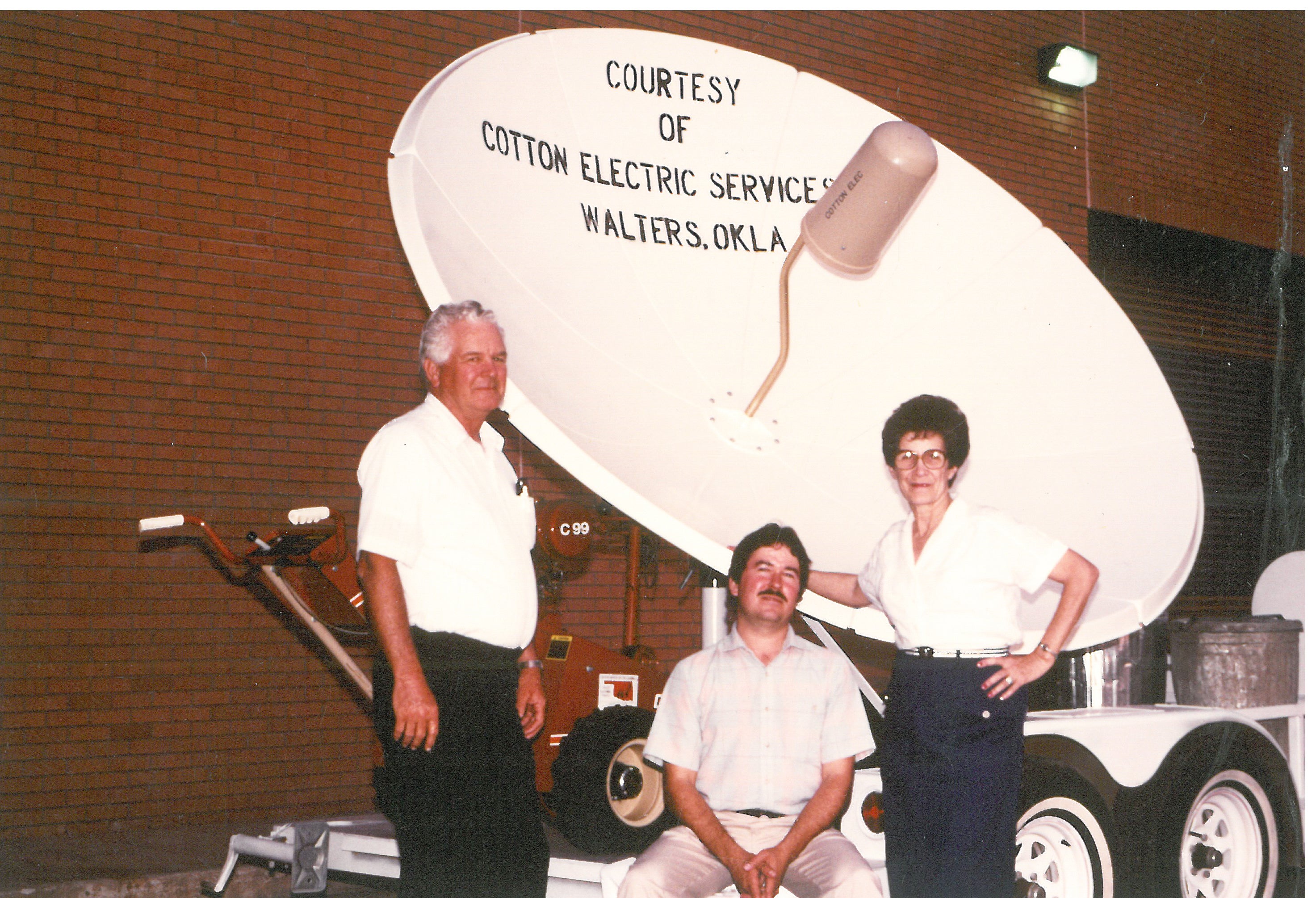
In 1985, a major change occurred when in-house meter reading was initiated and members no longer were required to read their own meters.
A subsidiary corporation, Cotton Electric Services, Inc., was organized in 1984, offering sales and installation of satellite TV receiver systems. Cotton Electric Services, Inc. also provided sales, installation and repair of electric heat pumps and refrigeration equipment.
Cotton Electric made national headlines and started a trend by donating satellite receiver systems to 24 area schools for educational opportunities available only via satellite. Over the years, the cooperative “loaned” refrigerators, electric ranges and microwave ovens to school kitchens and home economic departments. When the program was concluded, Cotton Electric sold the units to the schools at wholesale prices.
The 2000s

The new millennium has brought exciting opportunities for Cotton Electric. The co-op has continued its involvement in the communities of our service territory. Here at Cotton Electric, we support our eight-county service area in a number of ways. Cotton and its employees are active members of most area Chambers of Commerce.
Our cooperative is proud to help support more than 30 area school systems with tax money, contributions, volunteer work and youth activities such as 4-H programs, Oklahoma REC’s Youth Power Energy Camp for eighth graders and the Rural Electric Youth Tour for junior students.
Many of our employees work after hours volunteering for many civic and community duties such as fire fighters, first aid instructors, coaches, teachers, church workers, booster club members, city council members, and many others. One of the programs is “Adopt-A-Community.” Employees represent Cotton Electric Cooperative at regular community and civic meetings within our service area. They assist and help in resolving any problems they can as their electric company.
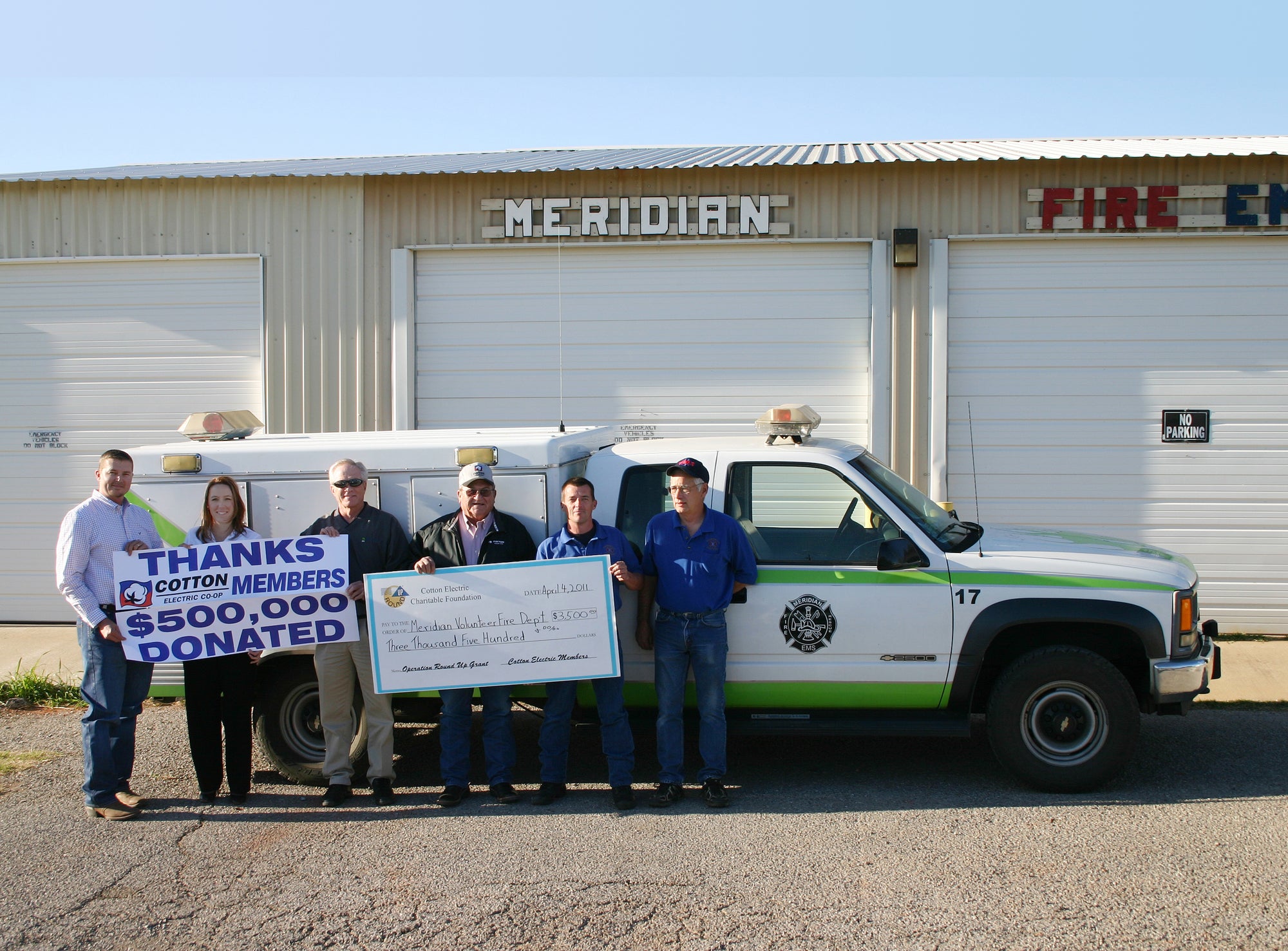
In 2004, Cotton Electric Cooperative added an additional community service when it adopted the Operation Round Up program. Simply stated, Operation Round Up gathers voluntary contributions from participating co-op consumers by “rounding up” their monthly bills to the next dollar. For example, a member with a bill of $52.49 is rounded to $53.00. The 51 cent difference is deposited into the Operation Round Up fund. Donations are tax deductible.
Also in 2004, Cotton Electric implemented an aggressive vegetation management policy in order to improve the quality of service to members. By clearing trees and brush, there are fewer service interruptions and in the event of an outage, line crews are able to work quickly and safely in an improved environment to restore power.
Cotton Electric closed out the first decade of the new millennium with major upgrades of computer software. One phase mapped the entire service area, complete with details about the 5,000+ miles of line, where it goes and who it serves. This dramatically improved the co-op’s ability to address outages and other issues. The other upgrade overhauled the internal bookkeeping system.
Present
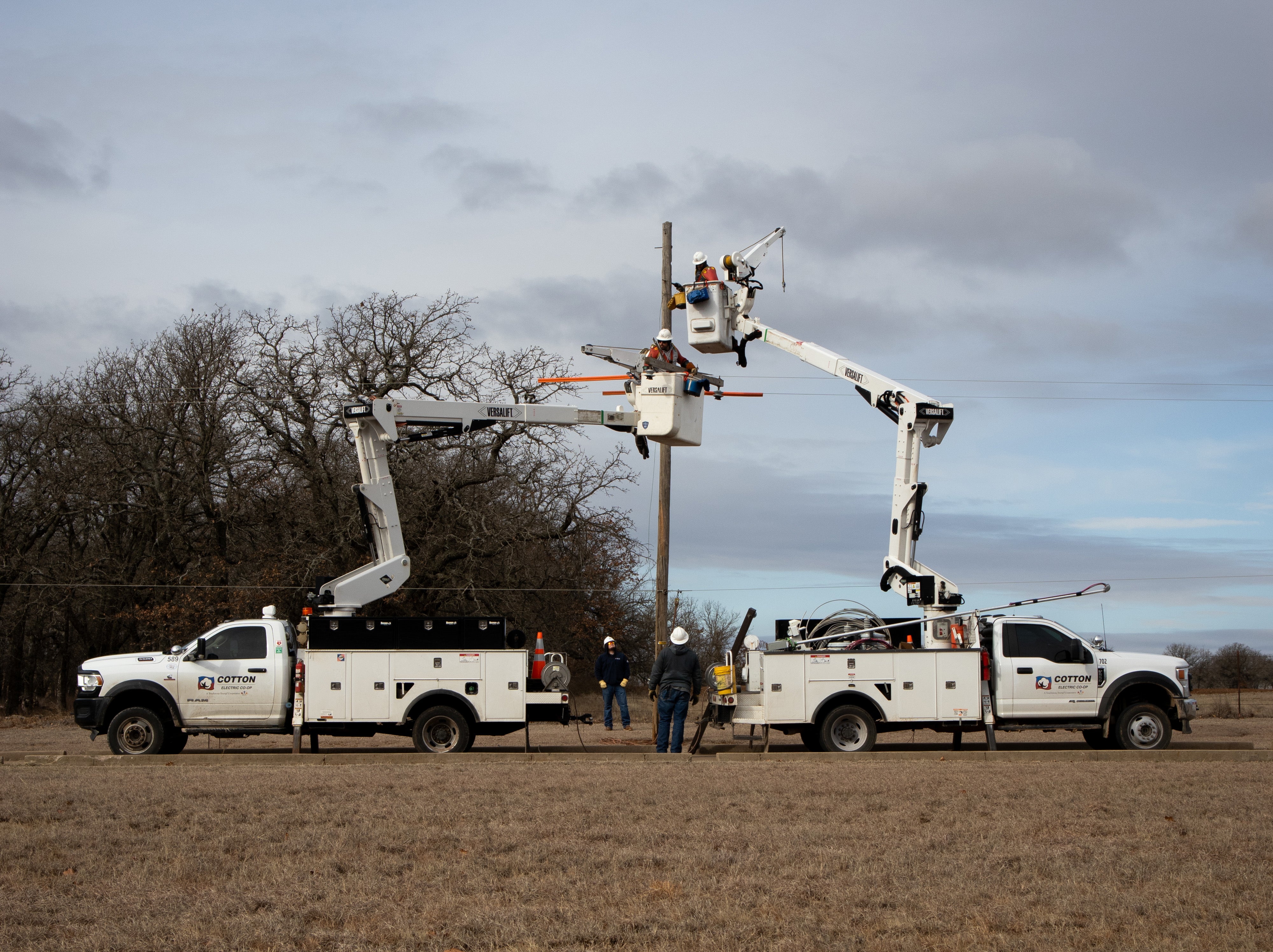
The upgrades and the vegetation management program demonstrated their value when the co-op was hit with a devastating ice storm Jan. 28-29, 2010. Damage was widespread. At one point, only 630 of 21,386 meters had service. The extent of damage was the worst in the co-op’s history but the pace of restoration was swifter than what it would have been even 10 years earlier. Some members were without power for 13 days. The co-op lost about 2,400 poles and cost to restore was around $12.5 million.
In 2017, Cotton Electric’s power provider built a new substation near Devol in the southwest corner of the service territory. This created an opportunity to launch a metering pilot project, exploring new technology that can improve outage restoration efforts. Nearby, 950 solar modules quietly soak up energy produced by the sun. The solar site generated 446 MWh of energy in its first year.

For more than 80 years, Cotton Electric has had a dramatic impact on lifestyles of families in this area, moving them “from lamplight to satellite.” Today, the cooperative provides jobs for approximately 90 people. The cooperative delivers electricity and electric service to more than 20,000 locations along a network of approximately 5,169 miles of line reaching into eight counties of southwest Oklahoma. The consumer-members own this electric plant valued at more than $130 million, with total assets worth more than $145 million.
The Cotton Electric Board of Trustees is composed of Shan Files, Ken Layn, Todd Clark, Dell Farris, Brian DeMarcus, Steve Robinson, Tony High, Nichole Scott and Clifford Dunham. The board, in addition to Chief Executive Officer Jennifer Meason and a dedicated group of employees, continue their efforts to provide quality electrical service to members at the lowest possible cost.
